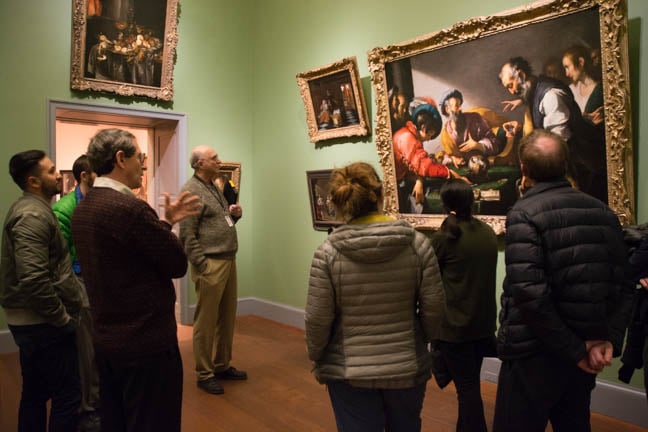Museum Nights: Art Observation Improves Radiology Residents Visual Perceptive and Descriptive Skills
In the Spring, we added to our radiology residency curriculum an Art Observation Program developed by Dr. Andrew Singer in conjunction with the educational staff at the Worcester Art Museum. The goal of the program is to use techniques of close observation commonly used in evaluation of Fine Arts to expand the residents observational, communication and analytic skills; all skills crucial for a radiologist. While similar programs have been created for medical students, initially in 2001 at Yale School of Medicine and since then has been incorporated into the curriculum at over 30 medical schools, this is the first program developed specifically for Radiology Residents.
At the Museum, the residents were given the opportunity to observe each painting, summarize their findings and construct the story depicted in the painting. This parallels the process of interpreting an imaging study and forming an impression of the patient’s condition.
The structure of the first phase of the program includes:
- A pre-visit questionnaire evaluating 3 imaging studies and 2 art works.
- A noon conference discussing these concepts presented jointly by Dr. Singer and a museum docent, Dr. Paul Steen, a retired internist.
- Small group visits to the museum to view art works with Drs. Singer and Steen.
- A post-visit questionnaire again evaluating 3 imaging studies and 2 art works.
The participating residents’ responses were compared to a control group of residents who answered the pre- and post-visit questionnaires but did not attend the museum sessions. Our findings showed that the residents who had participated in the program had a greater than 20% increase in the detail of their descriptions of findings and summaries of the paintings’ stories and imaging impressions.
Resident feedback included increased comfort in closely analyzing imaging studies and a deeper understanding of looking at “the big picture” and the interconnectedness of the parts. They also reported that looking closely, and discussing art at the museum was a relaxed and fun way to express their thoughts of what they were observing.
The next phase of the program will include:
1. Additional exercises related to improving detection of findings in individual images, cross-sectional imaging studies and 3D reconstructions.
2. We hope to take advantage of the art studios at the Museum and resources available at the iCELS center including the Anatomage Table to enhance spatial understanding of normal anatomy and pathologic processes.
3. Other plans include a collaborative Museum visit of 3 radiology and 3 primary care residents to explore the facilitation of interdisciplinary communication.

Dr. Andrew Singer discussing The Calling of Saint Mathew by Bernardo Strozzi (about 1620) with the radiology residents at the: Worcester Art Museum.




